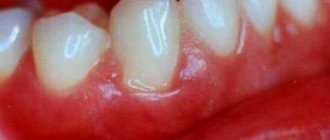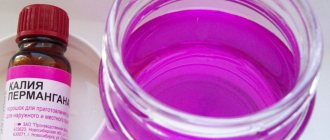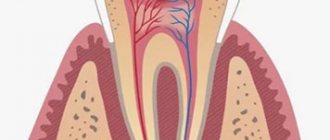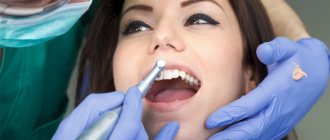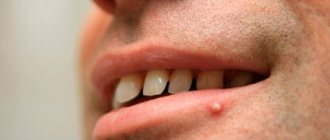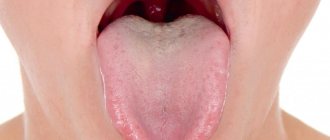Periodontal disease is commonly referred to as periodonitis and gingivitis, which often occurs in many people. This disease is not very common - it affects 10% of the population. At the same time, the process of development of periodontal disease is quite long. It can last for one, one and a half or two decades.
A clearly defined clinical picture is formed after 15–20 years of the disease, so the disease always has a chronic form. Depending on the actual condition of the patient, the disease can be divided into three forms:
- light;
- average;
- very heavy.
Each of them is determined by the doctor using an x-ray image and measurements of the exposed part of the roots.
Therefore, we will devote our article to the topic of periodontal disease. Let's find out what treatment methods our modern dentistry offers, how traditional medicine treats the disease described above. We will also find out what measures need to be taken to prevent the progression of the disease and clarify which medical doctor is treating this disease.
Causes
What provokes the development of periodontal disease and what is it? This is a systemic dental disease that is non-inflammatory in nature. Inexperienced people often confuse the disease described with the related disease periodontitis. However, these are completely different diseases. Periodontal disease is not characterized by bleeding or the formation of periodontal pockets where pus can accumulate. The unpleasant odor of periodontal disease from the gums is almost unnoticeable.
For your information! The causes of periodontal disease have not yet been established by medicine. However, the hereditary transmission of the disease is still recorded. In practice, it has been noted that the disease appears when there is dysfunction in the glands, in the presence of diabetes mellitus, when systemic diseases occur, in atherosclerosis, vegetative dystonia, hypertension and osteopathy.
Doctors have noted that gum damage by periodontal disease occurs due to impaired blood circulation in the gums, which over time causes tissue death and, as a consequence, tooth loss.
How does hydrogen peroxide and soda treatment work?
Professor Neumyvakin argues for the effectiveness of the treatment by the fact that soda has the ability to inflame the blood; its composition normalizes 15 minutes after consumption. In addition, the main cause of all diseases is eliminated - the acid-base balance is restored to normal, the body is cleansed, and the internal organs begin to work properly.
Official medicine does not know how to confirm these statements. But this method of treatment has thousands of fans who believe that it is quite effective. The technique includes: • health procedures; • physical exercise; • drinking 1.5 liters of water daily.
It's quite simple. Neumyvakin says that taking care of your health is not difficult, but it should be done systematically.
The professor is looking for new methods of healing and believes that they are the future of medicine. Combining traditional and official medicine is the key to successful recovery, in his opinion. After all, a contaminated body can hardly be considered healthy. He is convinced that it is necessary to get rid of toxins, cleanse the liver, kidneys and other internal organs.
Symptoms
The onset of the disease is characterized by a gradual weakening of the bone structure of the dental alveoli and ultimately their atrophy. On an x-ray image, the bone marrow spaces are recorded to be reduced in size, the bone is displayed with a fine-mesh structure, there is less bone tissue between the teeth, and pockets of osteoporosis are observed.
With the appearance of disorders in bone tissue, changes in the gums begin to be recorded. They weaken, become thinner and droop, thereby exposing the roots of the teeth. Against this background, the sensitivity of teeth to temperature and chemical exposure increases.
The general course of the disease is characterized by the following symptoms:
- A slight plaque forms on the teeth.
- The tooth necks become exposed and painful sensitivity appears within the problem areas.
- The gums become pale and begin to itch.
- The tooth necks are exposed, but there is no inflammatory process, gum pockets do not appear, and therefore pus does not accumulate in them.
Attention! The development of periodontal disease occurs very slowly and does not manifest itself at the 1st stage. Based on symptoms, doctors divide the disease into 3 degrees:
- First degree. Has no symptoms. Destruction of periodontal tissues is observed. In this case, discomfort and pain are not felt by the person.
- Second degree. The teeth gradually shift. The neck of the teeth begins to be visible through the depleted gums. The gap between the teeth becomes wider. Painful sensitivity to any irritants appears.
- Third degree. Teeth lose stability, become shaky, and begin to fall out. The patient “goes” to this stage for about 15 years.
Modern effective treatment methods suggest that timely treatment of a disease such as periodontal disease produces positive results.
Gums are bleeding - contact a periodontist
If you notice the slightest symptoms of periodontitis, immediately go to the doctor. The first sign is regular bleeding of the gums after mechanical impact.
If there is a single bleeding, there is no reason for serious concern: to strengthen the gums, you can change the toothpaste to a special product for the treatment and prevention of periodontitis, or use a strengthening gel or balm. But if bleeding becomes regular, you need to see a specialist.
If the disease progresses, some teeth may need to be removed. Therefore, the earlier the diagnosis is made and treatment is started, the greater the chances of completely getting rid of periodontitis without negative consequences.
Periodontal disease: diagnosis
The dentist can identify the disease, taking into account the actual manifestations of the disease, the symptoms known to doctors and the patient’s complaints.
When examining the problem, the doctor focuses on determining the condition of the alveolar process and the presence/absence of signs of its atrophy. It is this factor that allows us to determine the stage of damage to the oral cavity. However, a conventional visual examination will not be enough here, so doctors in such cases ask the patient to take an X-ray.
X-rays are guaranteed to show the degree of destruction of the dental alveoli and assess the stage of the disease.
Surgical methods
Treating periodontitis surgically is the most radical method. But in the later stages of the disease, it is necessary to eliminate periodontal pockets and remove non-viable teeth. This can only be done surgically.
The degree of intervention depends on the severity of the pathology. In some cases, a positive result can be achieved by simply depulping the tooth to remove pathogenic bacteria. The procedure for splinting teeth (connecting mobile teeth with adjacent teeth to ensure immobility) and other methods is also used.
A separate stage of surgical treatment is prosthetics. This is done to restore the functionality of the dentition, distribute the chewing load evenly, and prevent displacement and further loss of teeth. In some cases, a temporary prosthesis can be used to quickly unload the chewing surfaces and eliminate mobility during the recovery phase.
Treatment in a traditional context
This disease is treated by a periodontist. Its main goal is to restore the structure of the gums of a person suffering from the described disease. It should be noted that the outcome of periodontal disease treatment will be affected by the patient’s age and present diseases. For example, in old age, pathologies may include metabolic disorders, heart disease and endocrine system diseases.
The standard treatment procedure includes eight sequential steps:
- A doctor conducts an external examination of a person’s oral cavity.
- The problem is diagnosed using medical equipment (X-rays are taken).
- The client's teeth are cleaned of stones and plaque.
- Therapeutic treatment is prescribed: the patient is prescribed vitamins, hormones, as well as “gentle” anti-inflammatory drugs.
- The entire oral cavity is treated. Caries is treated, severely damaged teeth and roots are removed.
- Treatment is carried out using splinting (this method is chosen to reduce tooth mobility).
- Treatment is performed surgically.
- Dental prosthetics are being performed.
Without fail, the dentist directs his treatment to eliminate the infection and inflammatory process in the oral cavity. Such measures will help prevent the development of other diseases. It should be emphasized that it is possible to achieve visible results in the treatment of periodontal disease only if the existing pathologies are simultaneously treated.
What is tartar
Microbes settle on the enamel during food consumption and digestion and multiply under the influence of a moist, warm environment near the gums. If they are not removed within the next fifteen hours, the process of mineralization of these organisms will begin.
After seven days, mineralization becomes irreversible, and after six months, the “dead” microorganisms turn into natural stone, the shade of which varies from yellow to dark brown.
Thus, up to 30% of tartar consists of organic compounds, and the amount of inorganic components gradually increases from 70 to 90%.
Additional Information. It is necessary to understand that the composition is not constant and varies depending on the period of mineralization. The amount of organic matter decreases with each day of hardening.
Remember that after just a couple of days of lack of careful hygiene, the film forms a rough surface that attracts even more plaque.
In addition, the occurrence of gum inflammation is beneficial to the stone, since this increases the amount of periodontal fluid, which contains the necessary salts and proteins to increase the colony of microorganisms and further mineralization.
How traditional medicine suggests treating periodontal disease
When discussing the traditional treatment of periodontal disease, it should immediately be noted that the disease can be treated at home, provided that traditional methods are used. But only with a simultaneous visit to the dentist’s office. By combining the two directions, the treatment result will be more effective and faster.
Let's consider the most effective recipes that have long been tested by our ancestors:
- Treatment with saline solution and poorly dissolved fine fraction salt gives significant results. Using a strong saline solution and poorly dissolved salt particles, the gums are massaged, and ichor is released.
- Rinsing your mouth with hydrogen peroxide also gives good results (1 tablet of hydroperite is placed in a glass containing 250 ml of water). You will be able to see a significant improvement in the condition of your gums after the third procedure.
- Sauerkraut will help you feel the condition of your gums improve. To do this, you will need to chew it often and for a long time or rinse your mouth with juice squeezed from cooked sauerkraut. The result of the treatment will be noticeable within a week.
- Rinsing the mouth with a decoction of lingonberry leaves will help strengthen gum tissue. To prepare the solution you will need to take 6 g of dry leaves of the plant and 250 ml of water. The composition will need to be boiled over low heat for 20 minutes and strained. You should rinse your mouth with a slightly warm decoction regularly throughout the day 5 times or more.
- Rinsing your mouth with calamus infusion with propolis. This folk recipe gives good results to those who suffer from periodontal disease. Since it has been noted that calamus exhibits an analgesic effect when it penetrates the roots of teeth. The effect of propolis is manifested in filling small cracks. To prepare the medicinal composition, you will need to prepare two tinctures. For the first special tincture, take 0.5 liters. vodka and ½ cup calamus root sprouts. For the second tincture, take 0.5 liters. vodka and 20 g of propolis. Each of the tinctures is aged for 10 days. To rinse, you will need to mix tinctures (1 tbsp calamus + 1 tsp propolis). Rinsing your mouth should last 2 – 3 minutes. This should be done before going to bed and if there is severe pain. After three days, the pain will disappear. However, the course of treatment should be carried out for 3 to 5 weeks.
- A good disinfectant effect is obtained by rinsing the mouth using propolis extract alone. To do this, add 20 drops of an alcohol solution to 1 glass of water. Rinsing should be done up to 5 times a day. It is very important that the last rinse is done immediately before bed.
Particular attention should be paid to the treatment of periodontal disease with hydrogen peroxide. You can wipe your teeth with hydrogen peroxide, you can mix it into toothpaste or gently blot your gums with a swab well soaked in hydrogen peroxide.
Taking the prepared hydrogen peroxide solution inside should be very careful. Its overdose is not allowed.
- Recipe 1. Add 1 drop of solution to 50 ml of water. Consumption should be carried out 3 times a day 30 minutes before meals or after meals 2 hours later. Treatment usually does not last longer than a 10-day period. If after 3 days of use side effects begin to appear, treatment should be stopped immediately.
- Recipe 2. To wipe the gums, add 10 drops of hydroperite solution to slightly warmed water (50 ml will be enough).
Attention! To prepare a solution of hydroperite, which will be used for rinsing, it is allowed to use no more than 30 drops per day.
It is worth noting that honey is a strong antiseptic, so the following recipe will verify its effectiveness:
- mix salt with honey in a ratio of 1:2;
- the mixture is thoroughly mixed until the salt crystals disappear;
- For rubbing, you can use a toothbrush with soft bristles or a cloth in which a small amount of this mixture will be wrapped.
Ointment
Ointments have become widespread in the fight against periodontal disease. They can improve blood flow in the gums, have a healing effect and help preserve teeth.
Heparin ointment
It has the property of thinning the blood at the site of application, thereby improving microcirculation in blood vessels and metabolism in tissues. A small amount of ointment is rubbed into the affected gums twice a day. The course of treatment is 14 days.
Solcoseryl
Solcoseryl ointment has a powerful restorative effect, improves the absorption of oxygen and glucose by tissues. For periodontal disease, the drug is applied to the gums with massage movements for 2-3 minutes. Therapy is carried out until symptoms disappear completely.
Levomekol
Levomekol contains antibacterial and wound-healing components that promote faster restoration of periodontal tissues and eliminate symptoms of inflammation. Levomekol is used as an ointment for gums against periodontal disease in advanced cases. It is applied as an application on a sterile gauze pad to the affected area twice a day. The duration of use depends on the clinical manifestations and continues until the condition improves.
Clinical researches
According to the results of the clinical use of the Asepta line of products: the examined patients, already at the first follow-up examination (after 1-2 days) of using the Asepta line of products, showed a decrease in complaints of discomfort in the gums. On examination, hyperemia and bleeding of the gingival papillae are noted. On the 7th day, complaints of gum bleeding persisted in a minority of patients.
Upon examination, a decrease in hyperemia and swelling of the gums was noted, but bleeding persisted upon probing. On day 14, 2 patients continued to complain of bleeding gums when brushing their teeth; upon examination, a significant decrease in hyperemia and swelling of the gums was noted. After the final application of the gel with propolis, normalization of clinical manifestations was revealed, which is manifested by the absence of bleeding during brushing and probing.
Improved dynamics of indicators allows us to recommend the Asepta line of products for the local treatment of inflammatory periodontal diseases.
Sources:
- Clinical experience in using the Asepta series of products Fuchs Elena Ivanovna Assistant of the Department of Therapeutic and Pediatric Dentistry State Budgetary Educational Institution of Higher Professional Education Ryazan State Medical University named after Academician I.P. Pavlova of the Ministry of Health and Social Development of the Russian Federation (GBOU VPO RyazSMU Ministry of Health and Social Development of Russia)
- The use of adhesive balm "Asepta®" in the treatment of inflammatory periodontal diseases L.Yu. OREKHOVA*, Dr. med. Sciences, Professor, Head of Department V.V. CHPP**, Dr. med. Sciences, Professor, Head of Department S.B. ULITOVSKY*, Dr. med. Sciences, Professor A.A. LEONTIEV*, dentist A.A. DOMORAD**, O.M. YAKOVLEV** SPbSMU named after. acad. I.P. Pavlova, St. Petersburg - *Department of Therapeutic Dentistry, **Department of Microbiology
- The use of new anti-inflammatory drugs in the complex of therapeutic and preventive measures for periodontal diseases (E.D. Kuchumova, A.A. Leontyev, O.V. Kalinina, L.Yu. Orekhova, S.B. Ulitovsky) E.D. Kuchumova, Ph.D., Associate Professor, A.A. Leontyev, dentist, O.V. Kalinina, dentist, L.Yu. Orekhova, Doctor of Medical Sciences, Professor, Head of Department, S.B. Ulitovsky, Doctor of Medical Sciences, Prof. Department of Therapeutic Dentistry of St. Petersburg State Medical University named after. acad. I.P. Pavlova
- Article “Treatment and hygiene features for mild and moderate periodontitis” by S.B. Ulitovsky head Department of PFS, Professor, Doctor of Medical Sciences, A.A. Leontyev Associate Professor of the Department of PFS, Ph.D. PSPbSMU named after. I.P. Pavlova
- Evaluation of the effectiveness of treatment of chronic generalized periodontitis of mild and moderate severity using Asepta antibacterial agents (S.I. Gazhva, A.I. Voronina) S.I. Gazhva, Doctor of Medical Sciences, Prof., Head of Department A.I. Voronina, aspirant, dentist, Department of Dentistry, Faculty of Dentistry, State Educational Institution of Higher Professional Education "Nizhny Novgorod State Medical Academy"
- Study of the clinical effectiveness of treatment and prophylactic agents of the Asepta line in the treatment of inflammatory periodontal diseases (A.I. Grudyanov, I.Yu. Aleksandrovskaya, V.Yu. Korzunina) A.I. GRUDYANOV, Doctor of Medical Sciences, Prof., Head of Department I.Yu. ALEXANDROVSKAYA, Ph.D. V.Yu. KORZUNINA, asp. Department of Periodontology, Central Research Institute of Dentistry and Maxillofacial Surgery, Rosmedtekhnologii, Moscow
Watch the video about gum diseases
Notice
: Undefined variable: post_id in
/home/c/ch75405/public_html/wp-content/themes/UltraSmile/single-item.php
on line
45 Notice
: Undefined variable: full in
/home/c/ch75405/public_html/wp-content /themes/UltraSmile/single-item.php
on line
46
Rate this article:
( 1 ratings, average: 5.00 out of 5)
gum disease
